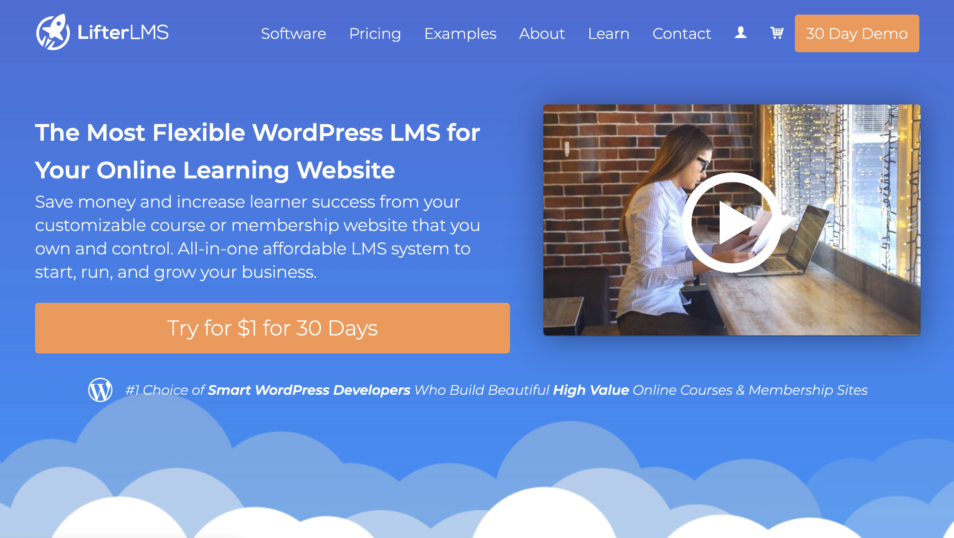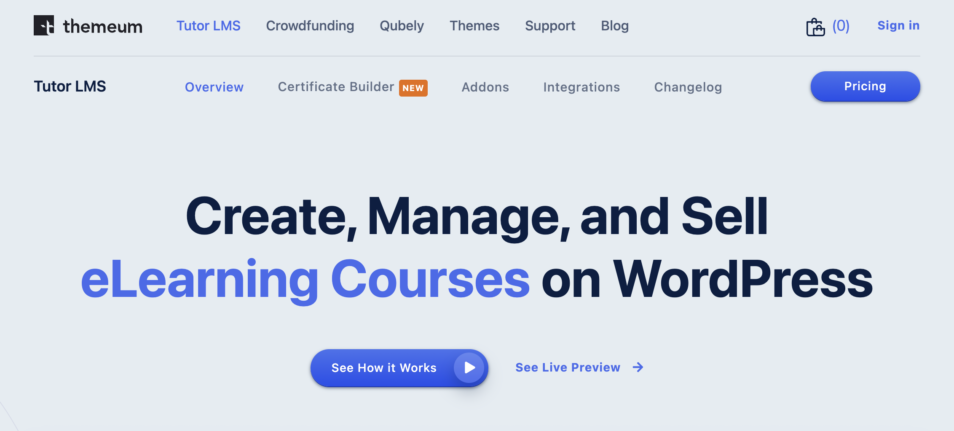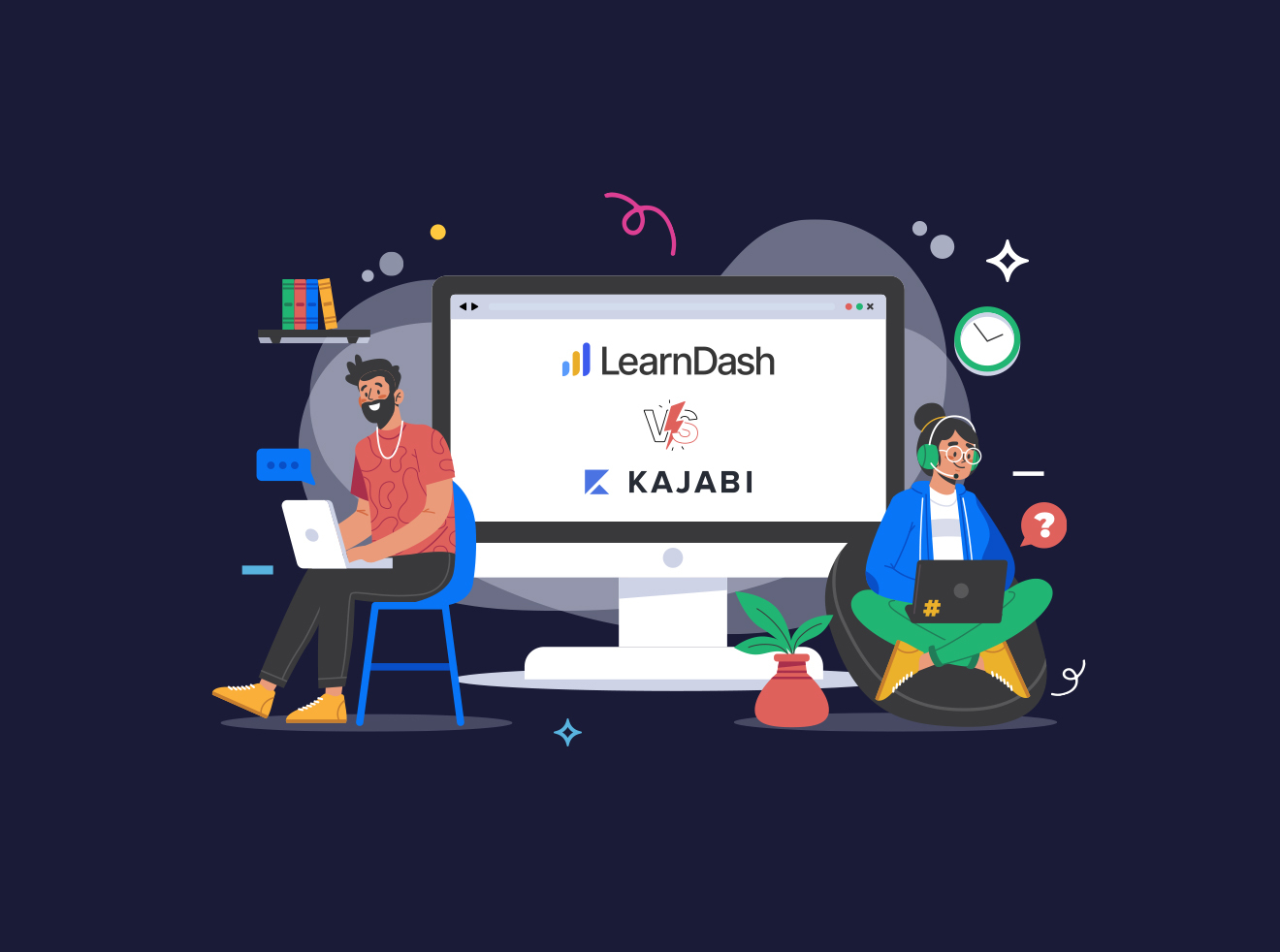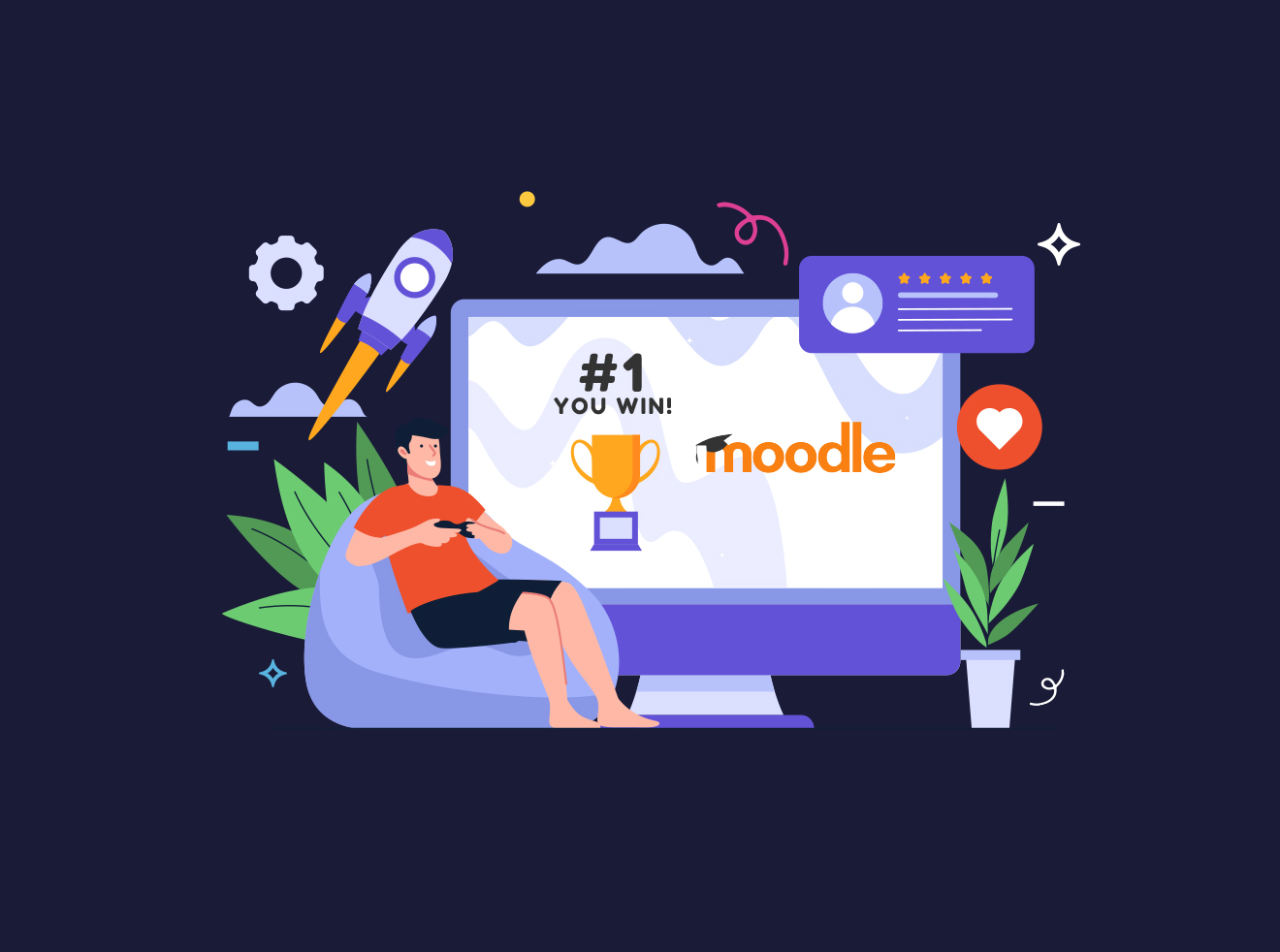Since it is now easier than ever to create a website, online courses are growing in popularity, and for a good reason. Online classes allow students to learn from the comfort of their own homes, allowing them to enroll in many courses at once and complete lessons at their own pace.
When it comes to creating an online course, you have multiple options for platforms. However, many come at a price. In addition, they limit your ability to customize your course.
A WordPress learning management system (LMS) plugin is typically the best option for a scalable, customizable eLearning website. Plugins for learning management systems simplify designing and managing comprehensive courses, similar to those found on Udemy and other sites.
This is unquestionably a decision that requires extensive investigation since you will devote a substantial amount of time to the LMS plugin you choose. And once you have created all of your course material, you will likely not wish to switch later.
What Is An LMS?
An LMS is any web-based or computer-based technology used to organize, carry out, and evaluate a predetermined learning process. Its primary application is in virtual classrooms. Its structure consists of a server that performs the heavy lifting and a user interface that can be modified by instructors, students, and IT staff.
Teachers can use an LMS to plan and deliver classes, monitor student participation, and evaluate learning outcomes. Students may also use their LMS to participate in online forums, video conferencing, and threaded discussions.
Many offline and online public and private schools and federal and state agencies of varying sizes commonly employ learning management systems (LMSs). As a result of the technologies’ enhancements to and cost savings for conventional pedagogy, schools stand to gain a great deal.
Enrollment, content, timetables, access, dialogues, recognition, and warnings are some things teachers and system administrators may manage with a well-designed system.
The Best WordPress LMS
After setting up your WordPress site, it’s time to look for an LMS plugin. With these plugins, you may run an online school and earn a living teaching people worldwide.
Therefore, let’s examine the top WordPress LMS plugins side by side so you can pick the one that works best for your educational platform.
LearnDash

LearnDash was developed by WordPress professionals in the field of e-learning. Educational institutions and solo course creators often consider it the best plugin for learning management systems.
An intuitive drag-and-drop interface makes it simple to construct courses in LearnDash, and the platform supports the development of courses with several levels, broken down into lessons and topics. Several well-known plugins, including WooCommerce and BuddyPress, are compatible with it. There is also an extensive market of add-ons designed to elevate its features.
Furthermore, the LearnDash plugin has built-in monetization options, allowing you to easily sell your online courses.
Key features:
- Focus Mode
- Course Certificates
- Notifications of Renewal Expire
- Quizzes, Assignments, and Video Lessons
- Built-in gamification
- Powerful user management
LifterLMS

LifterLMS is a popular WordPress LMS plugin. The core plugin is free and provides many of the same options for creating an online course. This consists of membership features, gamification, and course authoring.
LifterLMS is compatible with many plugins and themes, the most popular WordPress page builder plugin, and other popular plugins such as WooCommerce. Additionally, you can find several LMS add-ons to help you enrich its functionality.
Key features:
- Support for rich multimedia instruction
- Quizzes that are adaptive and allow for the creation of timed quizzes.
- Drip-feed course content, course tracks, and certifications
- Students’ front-end profiles for monitoring their development.
- Downloadable workbooks, electronic books, PDFs, as well as other offline learning materials
- Lesson feedback, forums, private coaching areas, and timelines.
- Integrated course assessments and recommendations to increase enrollment in courses.
- Multiple payment options, including recurring and payment plans, are supported.
- Ideal for those seeking a free plugin with robust features that is compatible with popular plugins.
TutorLMS

Tutor LMS separates from competitors with its front-end, drag-and-drop course editor. The basic plugin is free and includes all the tools required to build a comprehensive course. Paid plans include additional services such as email alerts and certificates.
Tutor LMS also works flawlessly with WordPress. Each student has their own front-end panel to monitor their course progress, accomplishments, and other information.
Key Features
- Unlimited course offerings
- Multiple video sources, including Vimeo, Youtube, and embedded videos, are supported
- Timer-supported examinations for your courses
- Marketing tools – affiliate links so that your pupils can assist in the spread of the word
- Integrated support for course evaluation and testimonials
- Integration with the popular Gutenberg and other page builder plugins
- Teachers can modify their profile information and publish courses
- Multiple payment gateway support
Ideal for solopreneurs, small-business owners, and anyone who needs a simple, free courses builder plugin without sophisticated features.
Factors to Consider When Choosing a WordPress LMS
Very few decisions in online education are as critical to the success of your courses as your selection of Learning Management Systems. Obviously, you must develop a quality course, promote the course, and possibly even hire the appropriate personnel to help you deliver and administrate the course. However, your LMS serves as the motor that drives your course.
Your students will access and interact with your course content via your LMS. It will hinder your ability to offer the optimal course if you cannot use it or if it does not perform as desired. If learners struggle with the LMS UI, it will hinder their ability to absorb the information and their overall course pleasure.
Given an LMS’s crucial position in delivering your content, you must choose the best plugin. Here are factors to consider when selecting an LMS to assist you in determining which platform is best for you.
Compatibility With Learner’s Preferred Format
If you utilize additional software or tools to administer your course, you must ensure they are interoperable with your LMS. An excellent LMS will have development APIs, so you do not need to modify your existing software.
In the case that all these applications contain content and tools essential to the success of your course, transferring to a new system may be more difficult than selecting an alternative LMS.
Integration With Additional Systems and Resources
Ensure that the chosen plugin is compatible with the existing system. LMS Interoperability is the capacity of your LMS to collect and exchange data with other applications in your tech stack.
It permits the automation of numerous tedious operations and allows you to merge valuable data from other applications with your training data and vice versa.
When the LMS is interconnected with your existing platforms and data flow is accessible, your users may devote more time to exploring features pertinent to their needs.
When your LMS is pre-populated with information about students and their progress from other tools, friction is decreased since users immediately see the platform’s relevance and value. If you reduce friction, your users will perceive a new LMS as a tool that will simplify their lives rather than add to their workload.
Ease Of Use
Usability is essential both on the front end, wherein your students will access their courses, and the back end, where your team will do administrative tasks. You should expect your LMS provider to include documentation demonstrating how to navigate the platform and additional tutorial resources. However, the program shouldn’t be irritating or difficult to use.
Verify to determine whether your LMS gives a demo to get a sense of how it operates before making a commitment. You will use this software as the principal channel for your online learning materials, and switching platforms incurs charges. You don’t want to be dissatisfied with your current platform and consider a switch, especially if you don’t know if the alternative platform is superior.
Gamification Capabilities
A professional in learning will use many game elements to create more interesting learning experiences. It is effective because it appeals to fundamental human wants, such as autonomy and competence. It has been demonstrated that gaming in training increases employee engagement by 60%.
Gamification is using game elements in non-game situations to make difficult jobs more appealing. Gamification promotes learner motivation and engagement by making education more entertaining. It is not a magic wand that will fix your training problems. This calls for a strategic strategy.
You can employ a variety of game features in your web-based learning environment to increase student engagement. These consist of the following:
Experience Points (XP) – These serve as a type of virtual currency that learners acquire by completing tasks on their learning system. This includes tasks such as completing modules and contributing to social feeds.
Battles — In battles, students compete in rapid-fire tests to demonstrate their subject expertise. These are fun and interesting approaches for students to retain information.
Leaderboards – Leaderboards track the performance of learners relative to other platform users. This is effective because it utilizes the learner’s intrinsic drive and personal goals.
Badges — When learners complete courses or interact with the platform, they acquire badges. These badges serve as virtual prizes and appeal to the drive to collect an entire set.
Streaks – This game mechanic requires actions to be accomplished spanning different days. For instance, you can establish a streak requiring participants to sign in to their classroom space daily. This contributes to habit building.
Levels allow you to give a logical progression across your learning content. When a learner completes all of the content inside a level, they “Level Up” and are granted access to a fresh set of educational activities. This feeling of progression encourages further participation.
Scorecard – The user’s scorecard displays their learning environment progress. It gives them a sense of prestige and allows them to develop new individual goals and aspirations.
Communication Tools
Increasing communication is among the most effective methods to develop a learner-centered pedagogy and boost student achievement. It enables learners to interact, exchange ideas, ask each other questions, solve problems together, and generally have rapid access to someone who can assist them.
Instant messaging can also be enabled to facilitate real-time communication between users. It is the most effective method of communication and is perfect for rapid inquiries. This feature can also be activated so that users receive notifications whenever something occurs.
Can you send notifications and emails to your learners using your LMS? Exist any automation technologies that might facilitate this communication? Is there a maximum amount of emails that can be sent or received? Some Learning management systems, for instance, limit your access to email individual learners unless you subscribe to a specific monthly plan tier.
Student-to-student connection is less vital, yet essential. A class forum enables students to discuss and assist one another with course material, fostering a sense of belonging that frequently lacks in an online learning environment.
Tracking Tools
Effective LMSs must be able to view student performance on quizzes and exams as one of their fundamental features. This is essential for grading and evaluating students. Still, from a broader perspective, you will also need to identify parts of your course that may require additional material, which could help you reduce your dropout rate.
User input is also essential for enhancing your online course. Therefore, you require an LMS capable of providing detailed information about how your students utilize your course. Find a system that can display the students’ course progress and the effort they put into lessons.
Functionality
User profiles, lesson management, copy protection, subscription access, and the capacity to add diverse media files are features to look for in a good LMS. A good platform will likely give you more features and functions than you anticipated.
If it is your first course, you might not have considered a number of the administrative functions required to make it successful. However, your LMS supplier will have considered them, as that is what they do.
However, the fact that a platform offers such features does not imply that you require them. Instead, think tactically about the functional requirements your online course involves.
For example, is your course simple or complicated? Some LMSs provide a service that eliminates certain features in favor of a simpler, more affordable program. Others are powerful tools designed to accommodate diverse curriculum materials and offerings.
Do not choose the cheapest option if it cannot meet your requirements. However, do not overpay for features that you will never use.
Summary
Numerous components must function in tandem to make a solid online course. Even if your LMS is only one piece of a larger puzzle, it can simplify the remainder of your work considerably. By paying attention to your course’s needs and experimenting with some of the available possibilities, you will be able to discover a suitable solution for your course.
We’ve explored the top WordPress LMS extensions that provide excellent tools and capabilities to transform your WordPress site into an interactive classroom.
Ensure that you have defined your needs before evaluating the capabilities and benefits. Establishing a budget is a crucial stage in the decision-making process.
You will not be disappointed with any WordPress LMS extensions on this list, so it’s more about identifying the specific capabilities you want for your online classroom. Consider price next, but don’t overthink it; a high-quality learning website can easily cover its monthly costs.




